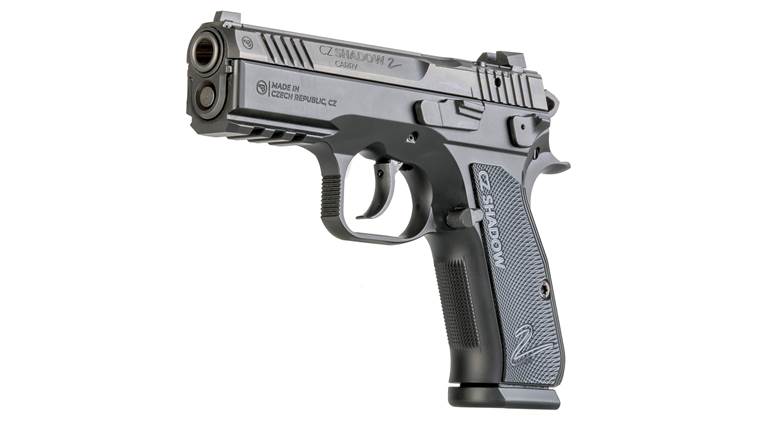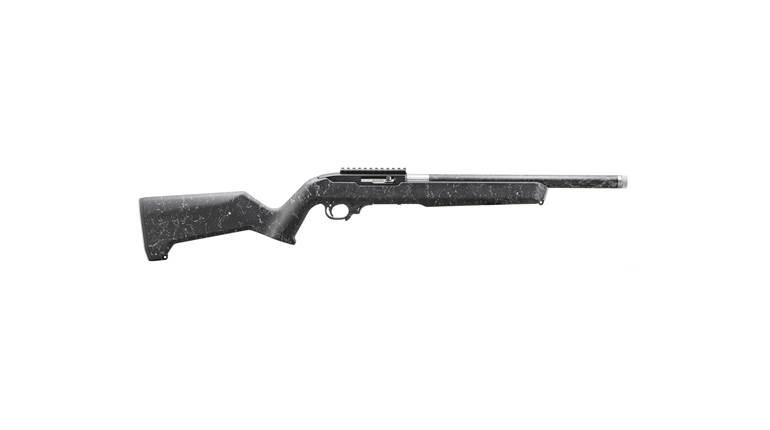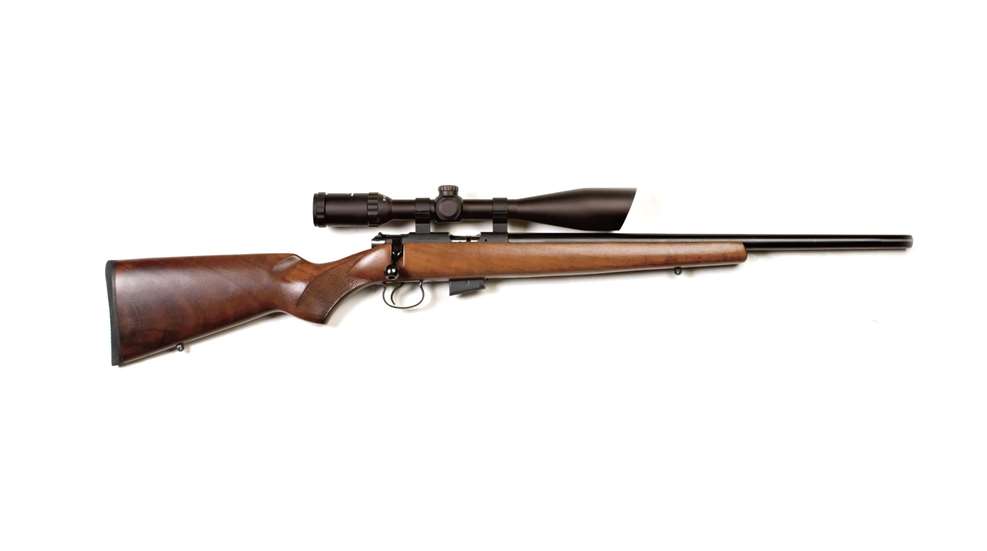
This feature article, “An Underappreciated Classic,” appeared originally in the April 2006 issue of American Rifleman. To subscribe to the magazine, visit the NRA membership page and select American Rifleman as your member magazine.
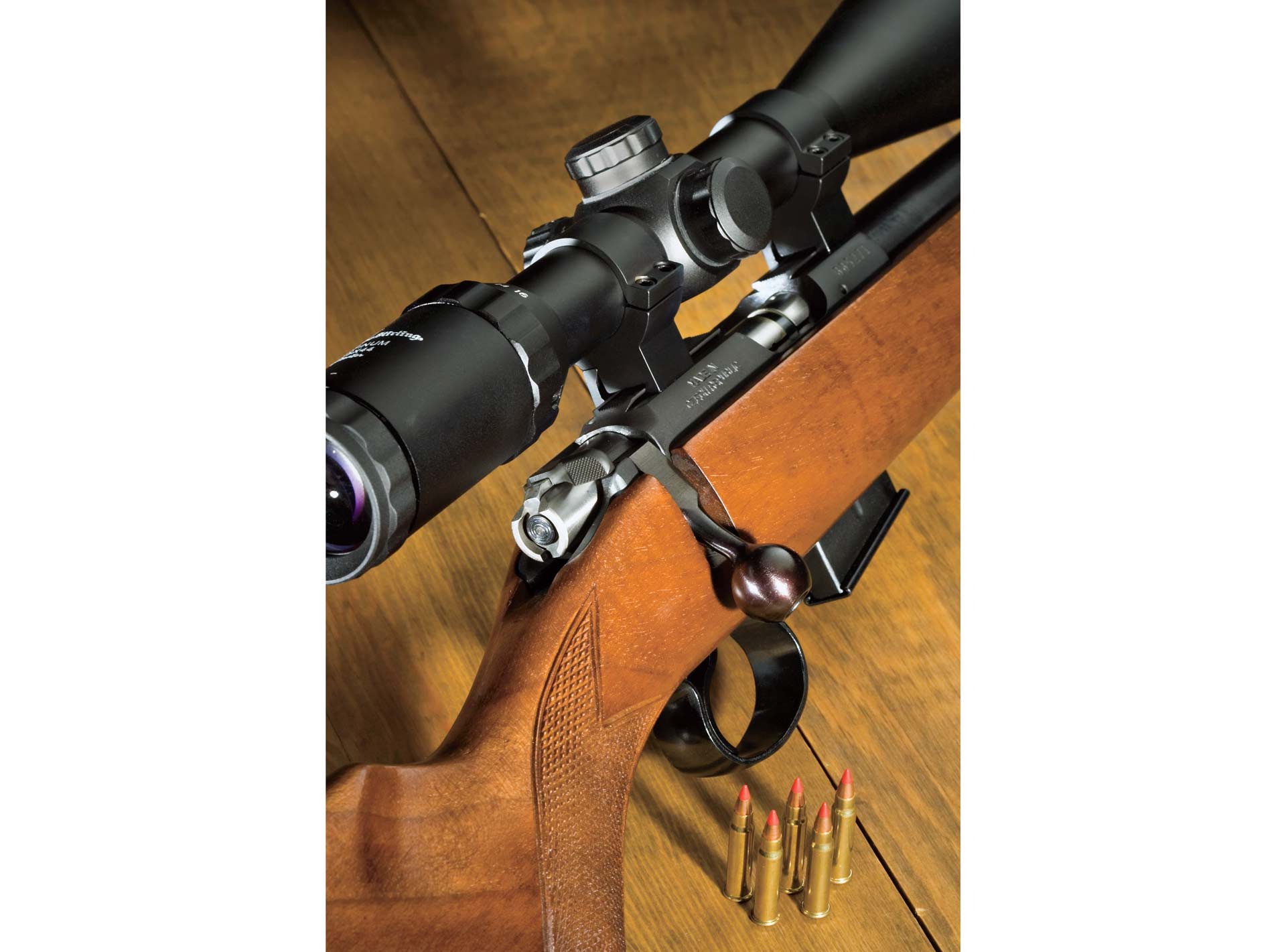
The CZ ZKM 452 rimfire sporter was around for more than 60 years and made the old-fashioned way—of blued steel and walnut. Though not as well known as other guns of its type, the CZ is, nonetheless, a “classic” rimfire sporter.
What makes some guns classics? Is it longevity? Style? Perfection of design? Or is it a combination of these? Some guns may have all three but don’t quite seem to get the recognition they deserve.
Take smallbore bolt-action rifles, for instance. Sometime when you and your shooting buddies are sitting around a toasty wood stove on a snowy winter day, ask them to name their favorite classic rimfire rifles. While guns such as the Browning Trombone slide-action, Remington Model 37 Rangemaster and Winchester 52 will receive their share of votes, chances are you won’t hear a single mention of a rifle that has been continuously manufactured for more than 40 years, whose production totals well into six figures: the CZ ZKM 452.
During its long and complex history, CZ has produced its share of renowned arms, including the Model 61 “Skorpion” submachine gun, the ZKK 600 series of hunting rifles and, most recently, the famed CZ-75 pistol. CZ stands for Ceska Zbrojovka, or “Czech arms factory”—a shortened version of the full company name, Ceska Zbrojovka a.s., Uhersky Brod (CZUB), in which “a.s.” signifies a joint stock company and “Uhersky Brod” is the location of the factory.
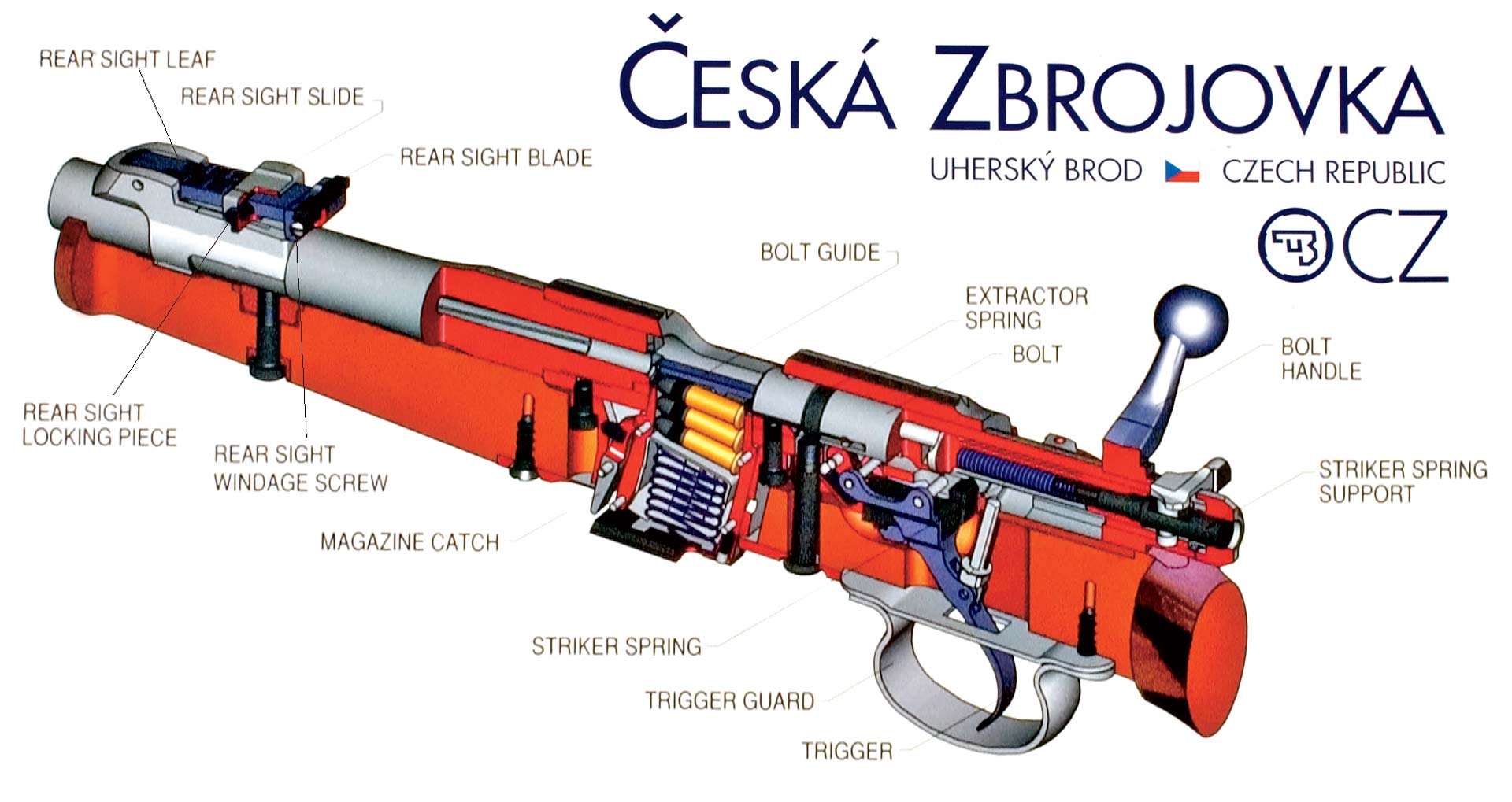
What is known CZUB was founded in 1936 as a subsidiary of Ceska Zbrojovka Strakonice, a facility located southwest of Bohemia and primarily engaged in the design and manufacture of Czech military pistols. CZ Strakonice was itself an earlier offshoot of Zbrojovka Brno, the famed Brno arms plant. The Czechoslovakian government’s choice of Uhersky Brod for the new facility was motivated by a desire to distance arms manufacture from the German border—a prescient decision, given what was shortly to occur. Production commenced in February 1937, focusing primarily on military arms, though some air rifles and smallbore rifles were also made. During the German occupation, the factory turned out machine guns and anti-aircraft cannon.
The communist assumption of power in Prague in 1948 resulted in the nationalization of virtually all factories, and the Ceska Zbrojovka plant in Uhersky Brod became the Precision Machine-Tooling Company—a name that was to change several times during more than four decades of state ownership. Both military and civilian arms were built, the latter including self-loading and over-under shotguns, pocket pistols, airguns, and rimfire rifles. By the late 1950s, the factory supplanted the Strakonice arms facility as the center of Czechoslovakian handgun manufacture.
Starting in 1964, the Uhersky Brod plant also took the lead role in long-gun production, previously assigned to Zbrojovka Brno. The CZ 452 was designed in the early 1960s by Josef and Frantisek Koucky, brothers who, either singly or jointly, had a hand in many CZ designs, including the CZ 75. Serial production of the rifle, then known as the ZKM 452, commenced in 1964. The ensuing decades saw the proliferation of many different 452 configurations.
With the 1990s came the fall of communist rule and the dissolution of Czechoslovakia into two independent states: the Czech Republic and the Slovak Republic. Private enterprise also saw a resurgence, and in 1992 the current entity, CZUB, was formed. Relations with the United States also improved, and from 1991 through 1997, CZ arms began to be imported through such firms as Bauska, Action Arms and Magnum Research. In 1997, CZUB created CZ-USA to supply the growing American market. Operations began in early 1998 in Kansas City, Kan., where the company remains today.

In 2006, CZ-USA cataloged nine CZ 452 variants—the American, FS (Mannlicher stock), Lux, Training Rifle, Scout, Silhouette Synthetic, Style and Ultra Lux models—which differ in stock design, materials, sights, metal finishes and barrel configurations. Chamberings included .17 Mach 2, .17 HMR, .22 LR and .22 WMR, though not all chamberings are available in each model. In addition, the 452 action was used in the making of CZ 453 American and Varmint models, which are primarily distinguished by the addition of a single-set trigger. It is also used in the 513 Basic—an entry-level rifle with a simplified trigger and sights. Left-hand versions are available in some of these models.
I was offered the opportunity to perform a hands-on evaluation of a CZ 452, specifically the American model in .17 HMR that was introduced in 2003. The CZ 452 American is made the way classic guns should be made: of steel and wood—no zinc or plastic. The heart of the 452—its action—is simple and robust with a 1.18"-diameter receiver machined from a solid-steel billet, with beefy walls more than 0.2" thick to impart rigidity, and a short 1.5"-long ejection port. The receiver ring is threaded to accept the barrel tenon and has a 0.095" gas port on the right side. On top of the receiver is an integral 3/8" dovetail scope-mounting rib, rather than the 11 mm dovetail on most other 452 models. The rifle has no iron sights, nor is the barrel drilled and tapped.
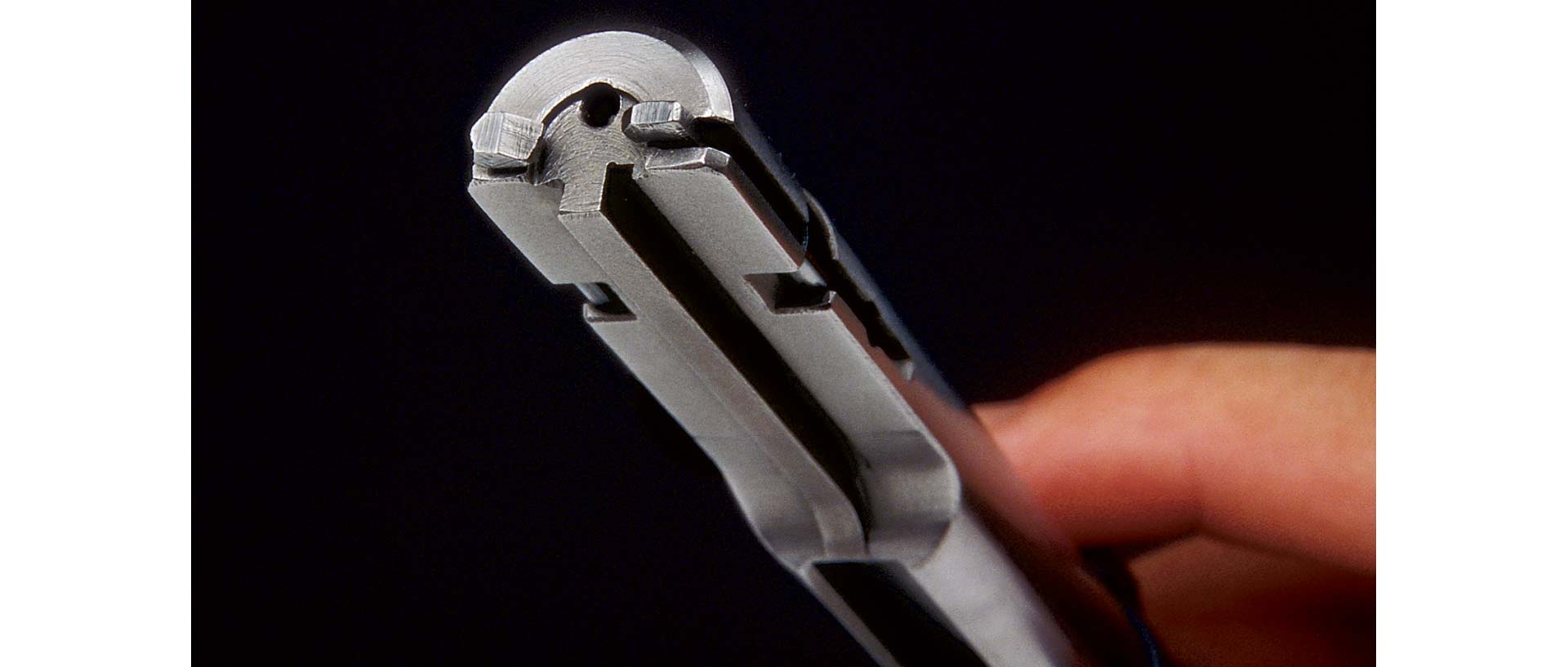
The 22½" barrel on the 452 American has a medium-heavy profile measuring 0.98" at the receiver ring and 0.69" at the muzzle. The rifling is via the hammer-forging method and in a six-groove, 1:9"-twist pattern. A recessed crown protects the rifling at the muzzle.
Unlike the blued receiver, barrel and most other steel components, the rifle’s 0.705"-diameter bolt is left in the white. The bolt body itself is non-rotating; the bolt handle forms a rotating collar that encircles the rear of the bolt and contains the cam that cocks the striker when the handle is lifted. Lockup is accomplished using the root of the bolt handle, which fits into a notch in the receiver, and a stout lug on the bolt body—180 degrees opposite—that engages a recess in the receiver. The bolt handle is curved for scope clearance and is swept slightly rearward, terminating in a 0.75" round, smooth, hollowed-out knob.
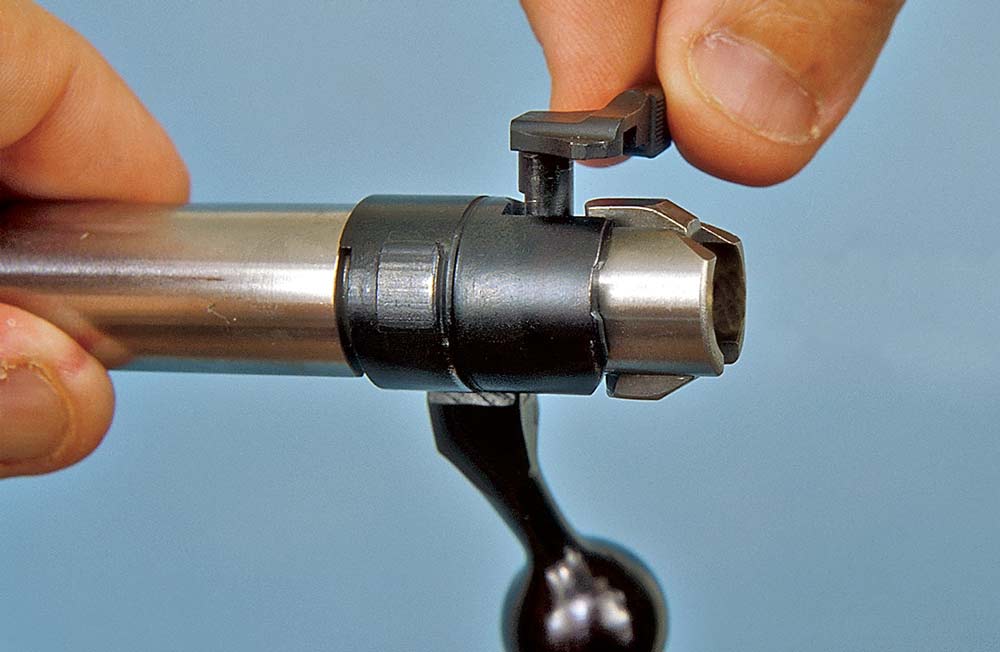
Just to the rear of the bolt handle is the two-position safety lever that is pushed forward to lock the striker and bolt, and rotated rearward to fire the gun. In the “FIRE” position, the safety exposes a red dot on the receiver. As an additional safety feature, the end of the striker visibly protrudes from the bolt body when the rifle is cocked.
The bolt head features a 0.115" gas vent on top and a recessed face with dual opposed extractors in the 3 and 9 o’clock positions tensioned by a spring clip. A slot in the underside of the bolt allows passage over the stationary ejector mounted in the floor of the receiver. This type of ejector allows the shooter to control the distance spent cases are thrown through the speed of bolt retraction.
At the front of the magazine housing on the underside of the receiver is a pivoting magazine catch that is pulled rearward to release the rifle’s five-round, steel box magazine. When installed in the gun, the magazine protrudes about 5/8" beyond the underside of the stock—an aesthetic break in the otherwise clean lines of the rifle. To the rear of the housing is the rifle’s rugged single-stage trigger mechanism that has design similarities to both the Winchester Model 70 and Mauser 98 units. Pull weight can be adjusted from about 2½ to 4½ lbs. via a nut on the trigger rod.
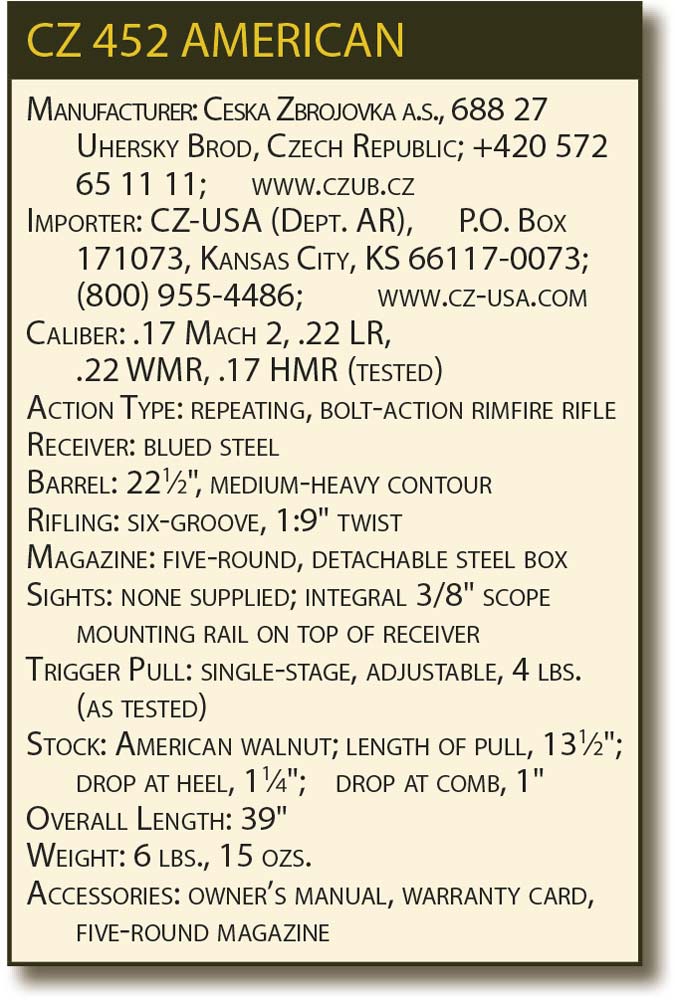
The CZ 452 American is distinguished primarily by the straight comb and simple rounded fore-end of its American walnut stock that supplant the hogsback comb and schnabel fore-end of the Euro-style 452 variants. Other stock features include a 1/2"-thick textured-rubber butt pad, front and rear sling swivel studs, and functional 14 line-per-inch hand checkering on the wrist. Without question, the stock proportions are suited for a full-size adult; a child might be better served by the CZ 452 Scout. The all-steel bottom metal is a welcome feature, though the stamped trigger guard does not complement the rest of the rifle’s classic styling. The barrel channel does not free-float the barrel.
Disassembly commences with ensuring that the gun is unloaded and the magazine is removed. The bolt is pulled to the rear, and the trigger is pulled to allow the bolt to clear the receiver. The action screws are turned out to separate the unloaded barreled action from the stock. The bolt can be further stripped by rotating the handle down, pressing the striker-spring support at the end of the striker against a hard surface and removing the safety lever upward. At this point, the bolt handle, striker, striker spring and striker-spring support can be taken out of the bolt body. Reassembly is in the reverse order.
OK, that’s the basic technical rundown on the CZ 452, but how did it perform? I mounted a Nikko Stirling Platinum Nighteater 4-16x44 mm riflescope using Warne 7.3 series steel rings. Note that the CZ’s 3/8" dovetail is measured across its minor diameter, not the flat, so some nominal 3/8" rings may not fit.
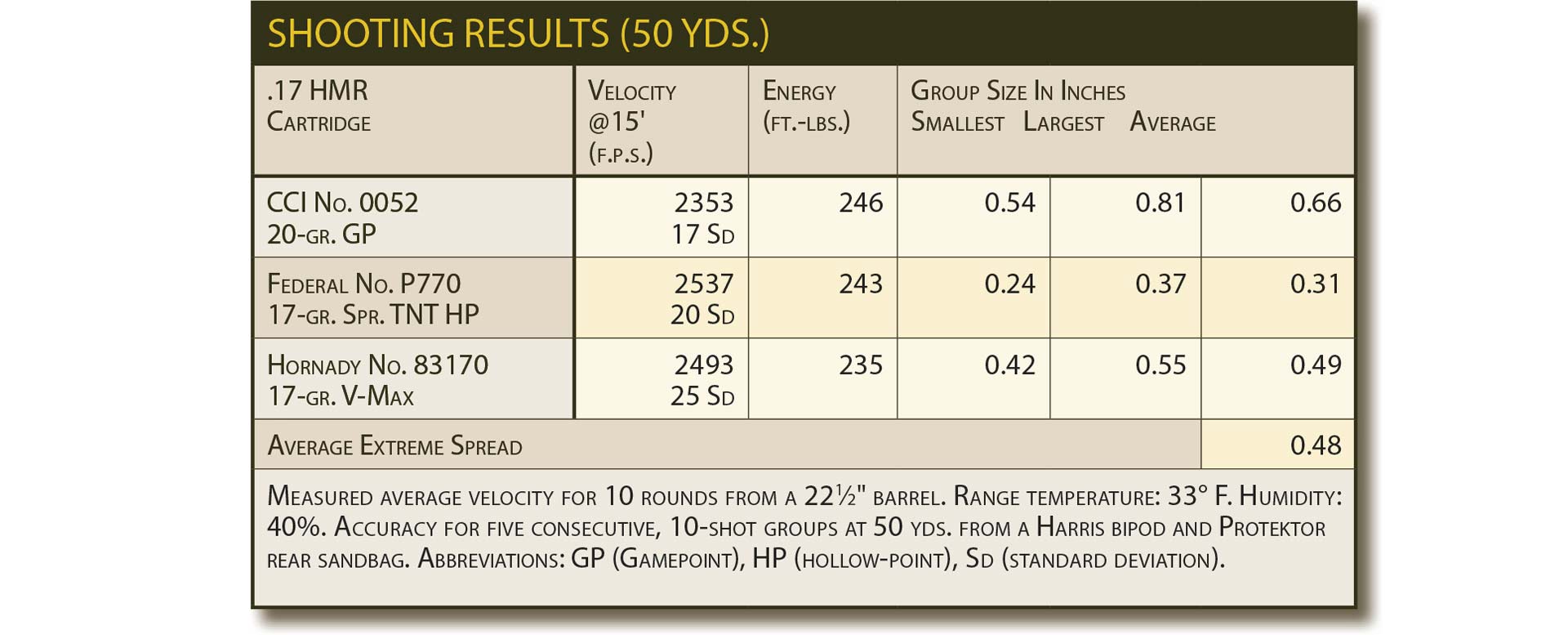
Test-firing was performed at 50 yards off a Harris Type S bipod and Protektor rear bag, using .17 HMR loads from CCI, Federal and Hornady. The CZ 452 proved itself an outstanding performer, most notably with the Federal V-Shok load, whose 17-gr. Speer TNT HP bullets produced 10-shot groups averaging 0.31". Accuracy was aided by the rifle’s consistently crisp 4-lb. trigger and good stock design along with the bright, clear view through the Nikko Stirling scope. Full accuracy and chronograph results are in the accompanying table. No malfunctions of any kind occurred.
Overall, my impression of the CZ 452 American is overwhelmingly positive. Aside from the cosmetically challenged trigger guard and protruding magazine previously referred to, and a few checkering imperfections, there’s just about nothing I’d change. Perhaps that’s another definition of a classic: a design that has reached such a level of refinement that it simply can’t be substantially improved.
So the next time you’re around that wood stove and the subject of classic rimfires comes up, you’ll be able to explain to your buddies why the CZ ZKM 452 is as deserving of that designation as any other.












